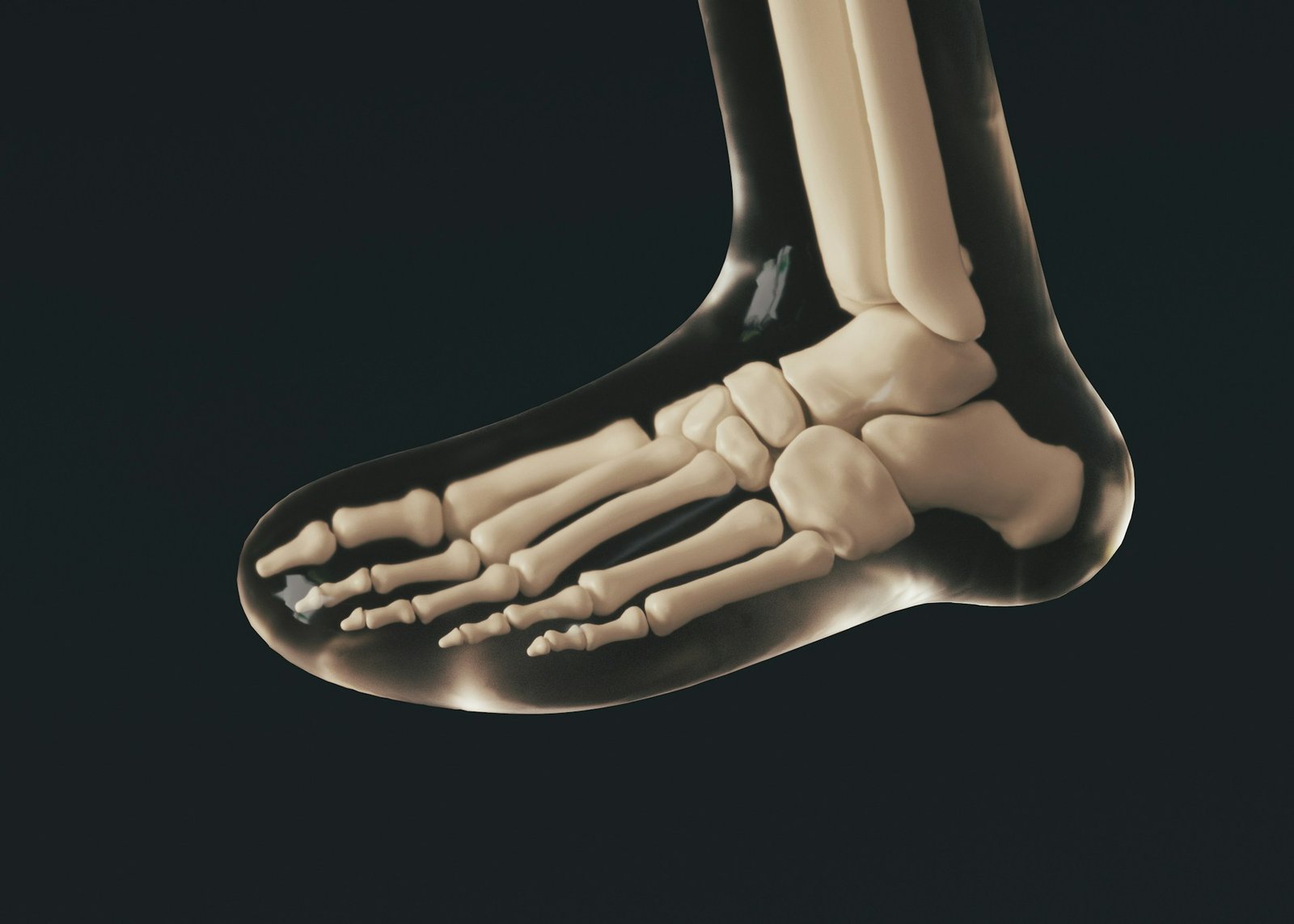The anticipation of a new day is quickly overshadowed by a sharp, stabbing pain shooting through his heel. John winces, recalling the countless mornings he has greeted with the same unwelcome sensation. He had been diagnosed with plantar fasciitis months ago but, despite following the prescribed treatment plan to the letter, there was little to no improvement. It was during a conversation with a fellow runner that John first considered the possibility that his diagnosis might have been a misstep. Thus, leading him to wonder what is commonly mistaken for plantar fasciitis?
John’s story is not unique. Many individuals diagnosed with plantar fasciitis actually suffer from conditions that exhibit similar symptoms but require different treatments. Misdiagnosis can lead to prolonged discomfort and unnecessary treatments. Understanding these conditions is the first step towards obtaining the correct diagnosis and, ultimately, relief.

Key Highlights
- Plantar fasciitis causes pain and stiffness on the inner part of the foot arch, often at its worst in the morning or after long periods of sitting.
- Other conditions commonly mistaken for plantar fasciitis include Achilles tendonitis, heel spur syndrome, stress fractures, and arthritis.
- Baxter’s nerve entrapment and tarsal tunnel syndrome are less known conditions that can mimic plantar fasciitis pain.
- It is important to correctly diagnose your heel pain to ensure appropriate treatment and prevent unnecessary interventions.
- Lifestyle modifications, proper footwear, and early intervention can help prevent misdiagnosis and recurrence of heel pain.
- FAQs: The fastest way to cure plantar fasciitis, can walking barefoot cause plantar fasciitis, what does plantar fasciitis feel like, and how to differentiate between plantar fasciitis and stress fractures.
Understanding Heel Pain and Plantar Fasciitis
Heel pain is a common complaint, and one of the most well-known causes is plantar fasciitis. The plantar fascia is a thick band of tissue that runs along the bottom of the foot, connecting the heel bone to the toes. When this tissue becomes inflamed or irritated, it can cause intense pain in the heel. The pain is often felt on the inner part of the foot arch, close to the heel bone. It is typically worse in the morning or after periods of rest, and may improve with activity.
Symptoms of Plantar Fasciitis
The symptoms of plantar fasciitis can vary from person to person, but the most common symptom is pain in the bottom of the heel. The pain is often described as sharp, stabbing, or throbbing, and may be accompanied by stiffness in the foot. The pain is usually worse in the morning or after periods of rest, and may improve with activity. Some individuals may also experience swelling or tenderness in the arch of the foot. It is important to note that not all heel pain is caused by plantar fasciitis, and a proper diagnosis is necessary to determine the underlying cause.

Conditions Often Confused with Plantar Fasciitis
While plantar fasciitis is a common cause of heel pain, there are several other conditions that can mimic its symptoms. These conditions often present with similar pain and discomfort, making it difficult to differentiate between them without a proper diagnosis.
Some of these conditions include Achilles tendonitis, heel spur syndrome, stress fractures, and arthritis. Understanding the similarities and differences between these conditions is essential for accurate diagnosis and effective treatment.
Achilles Tendonitis: Similarities and Differences
Achilles tendonitis is a condition that involves inflammation of the Achilles tendon, which connects the calf muscles to the heel bone. The symptoms of Achilles tendonitis can be similar to those of plantar fasciitis, including heel pain and stiffness. However, the location of the pain is different.
Achilles tendonitis typically causes pain and discomfort in the back of the ankle, while plantar fasciitis primarily affects the bottom of the heel. Proper diagnosis is crucial to determine the appropriate treatment for each condition.
Heel Spur Syndrome: How It’s Related
Heel spur syndrome is often associated with plantar fasciitis, as the two conditions often occur together. A heel spur is a bony growth that develops on the heel bone, and it is often found in individuals with plantar fasciitis. The presence of a heel spur does not necessarily mean that a person has plantar fasciitis, but it can contribute to heel pain and discomfort.
It is important to address the underlying causes of heel spurs and plantar fasciitis to alleviate symptoms and prevent further complications.
Stress Fractures
Stress fractures are small cracks or breaks in the bones that occur due to repetitive stress or overuse. These fractures can cause sharp, localized pain in the affected area. In some cases, stress fractures can be mistaken for plantar fasciitis, as they can cause similar symptoms such as sharp pain in the bottom of the foot. However, stress fractures are typically more localized and may worsen with activity.
Proper diagnosis through imaging studies such as X-rays or MRI scans is necessary to differentiate between stress fractures and plantar fasciitis.
Arthritis
Arthritis is a condition characterized by joint inflammation, and it can affect any joint in the body, including the joints in the foot. Rheumatoid arthritis, in particular, can cause inflammation and pain in the joints of the foot, including the heel. The symptoms of arthritis can be similar to those of plantar fasciitis, including heel pain and stiffness. However, arthritis typically affects multiple joints and may be accompanied by other systemic symptoms. A thorough examination and diagnostic tests are necessary to differentiate between arthritis and plantar fasciitis.

Less Known Conditions Mimicking Plantar Fasciitis
While plantar fasciitis and the aforementioned conditions are commonly mistaken for each other, there are also lesser-known conditions that can mimic the symptoms of plantar fasciitis. Two such conditions are Baxter’s nerve entrapment and tarsal tunnel syndrome.
These conditions involve the compression or irritation of nerves in the foot and can cause pain and discomfort similar to plantar fasciitis. Understanding these conditions and their distinguishing features is essential for accurate diagnosis and effective treatment.
Baxter’s Nerve Entrapment: An Overview
Baxter’s nerve entrapment is a condition that involves the compression or entrapment of the inferior calcaneal nerve, also known as Baxter’s nerve. This nerve runs along the bottom of the heel and can become compressed or irritated, leading to heel pain. The symptoms of Baxter’s nerve entrapment can be similar to those of plantar fasciitis, including sharp or burning pain in the heel.
However, the location of the pain and the specific nerve involved differentiate Baxter’s nerve entrapment from plantar fasciitis. Proper diagnosis and targeted treatment are necessary for effective management of Baxter’s nerve entrapment.
Tarsal Tunnel Syndrome Explained
Tarsal tunnel syndrome is a condition that occurs when the tibial nerve becomes compressed or entrapped as it passes through a narrow tunnel in the ankle known as the tarsal tunnel. This compression can cause pain, tingling, or numbness in the foot and ankle.
The symptoms of tarsal tunnel syndrome can be similar to those of plantar fasciitis, as both conditions can cause heel pain and discomfort. However, tarsal tunnel syndrome typically involves symptoms along the inside of the ankle and may affect multiple areas of the foot. Diagnosis through physical examination and diagnostic tests is necessary to differentiate between tarsal tunnel syndrome and plantar fasciitis.

Misdiagnosis: A Closer Look at the Stats
While specific statistics on the misdiagnosis of plantar fasciitis are challenging to pinpoint, it’s known that about 10% of people will suffer from plantar fasciitis at some point in their lives. The similarity in symptoms between plantar fasciitis and other foot conditions often leads to a misdiagnosis rate that is not negligible.
Early intervention and accurate diagnosis are crucial for effective treatment and quick recovery, underscoring the importance of seeking a second opinion or consulting with specialists when treatment outcomes do not meet expectations.
Misdiagnoses That Lead to Unnecessary Treatments
Misdiagnosis of heel pain as plantar fasciitis can lead to unnecessary treatments and delays in proper management. Two conditions that are commonly misinterpreted as plantar fasciitis are heel fat pad syndrome and calcaneal stress fractures. These conditions can cause similar symptoms to plantar fasciitis, but their underlying causes and appropriate treatments differ. Accurate diagnosis is crucial to ensure effective and targeted interventions, preventing unnecessary invasive procedures and promoting prompt recovery.
Misinterpreting Heel Fat Pad Syndrome
Heel fat pad syndrome is a condition characterized by the thinning or atrophy of the fat pad located under the heel. This fat pad provides cushioning and protection to the heel bone. When the fat pad is damaged or thinned, it can cause heel pain and discomfort, which can be mistaken for plantar fasciitis. However, the pain in heel fat pad syndrome is typically located more centrally on the bottom of the heel, as opposed to the inner part affected by plantar fasciitis.
Proper diagnosis through physical examination and imaging studies is necessary to differentiate between heel fat pad syndrome and plantar fasciitis.
The Misunderstood Calcaneal Stress Fracture
A calcaneal stress fracture is a small crack or break in the heel bone, often caused by repetitive stress or overuse. The symptoms of a calcaneal stress fracture can be similar to those of plantar fasciitis, including sharp pain in the heel. However, the pain in a stress fracture is typically more localized and specific to the site of the fracture.
Proper diagnosis through imaging studies, such as X-rays or MRI scans, is necessary to differentiate between a calcaneal stress fracture and plantar fasciitis. Prompt and accurate diagnosis is crucial to prevent further damage and ensure appropriate treatment.

How to Correctly Diagnose Your Heel Pain
Diagnosing the underlying cause of heel pain is essential for effective treatment and management. If you are experiencing heel pain, it is important to seek professional help from a podiatrist or healthcare provider specializing in foot and ankle conditions.
They will conduct a thorough examination, review your medical history, and may order diagnostic tests such as X-rays, MRI scans, or ultrasound to accurately identify the cause of your pain. Timely and accurate diagnosis will guide appropriate treatment decisions and prevent unnecessary interventions.
When to Seek Professional Help
If you are experiencing persistent or severe heel pain that does not improve with rest or home remedies, it is important to seek professional help from a podiatrist or healthcare provider specializing in foot and ankle conditions. They will be able to conduct a thorough examination, review your medical history, and order appropriate diagnostic tests to determine the underlying cause of your pain.
In severe cases or when conservative measures fail to provide relief, they may recommend more advanced treatment options such as physical therapy, steroid injections, or surgery. Seeking professional help will ensure that you receive the appropriate treatment for your specific condition and promote faster recovery.
Diagnostic Tests for Accurate Identification
Accurate diagnosis of the underlying cause of heel pain requires a combination of thorough physical examination, review of medical history, and diagnostic tests. Some of the commonly used diagnostic tests for heel pain include:
| Diagnostic Test | Purpose |
| X-ray | To assess the structure and integrity of the bones in the foot |
| MRI scan | To visualize soft tissues and detect stress fractures or other abnormalities |
| Ultrasound | To evaluate soft tissue structures such as tendons and ligaments |
| Nerve conduction studies | To assess nerve function and identify nerve entrapment conditions |
| Physical examination | To assess range of motion, strength, and stability of the foot and ankle |
These tests, along with a comprehensive clinical assessment, help in accurate identification of the underlying cause of heel pain and guide appropriate treatment decisions. Physical therapy may also be recommended to address any underlying biomechanical issues and promote healing and recovery.

Treatment Options for Plantar Fasciitis and Its Look-Alikes
The treatment options for plantar fasciitis and its look-alikes depend on the specific diagnosis and severity of the condition. Conservative measures are typically the first line of treatment and may include:
- Rest and avoiding aggravating activities
- Physical therapy to strengthen the foot and ankle muscles, improve flexibility, and address biomechanical issues
- Orthotics or shoe inserts to provide support and alignment to the foot
- Night splints to stretch the plantar fascia and relieve morning pain
- Medications such as nonsteroidal anti-inflammatory drugs (NSAIDs) for pain relief
In more severe or persistent cases, alternative treatments such as corticosteroid injections or extracorporeal shockwave therapy may be recommended. In rare cases, surgical intervention may be necessary. The appropriate treatment approach will be determined based on the specific diagnosis and individual needs of the patient.However, it is important to consult with a healthcare provider for a proper diagnosis and individualized treatment plan.
Surgical Interventions: Risks and Benefits
In cases where conservative treatments fail to provide relief or there is a severe underlying condition, surgical intervention may be considered. The specific surgical procedure will depend on the underlying cause of the heel pain. Surgical interventions for plantar fasciitis and its look-alikes come with risks and benefits that should be carefully considered.
Some potential risks of surgical intervention include infection, nerve damage, and prolonged recovery time. However, surgery may be necessary to address structural abnormalities, release entrapped nerves, or repair damaged tissues. The benefits of surgery include long-term pain relief and improved function. It is important to have a thorough discussion with a healthcare provider to understand the risks and benefits of surgical interventions and make an informed decision.

Preventing Misdiagnosis and Reoccurrence
Preventing misdiagnosis and reoccurrence of heel pain requires awareness and proactive measures. Here are some ways to prevent misdiagnosis and promote long-term relief:
- Seek early professional help for persistent or severe heel pain
- Follow appropriate diagnostic protocols to ensure accurate identification of the underlying cause
- Adhere to recommended treatment plans and rehabilitation programs
- Maintain a healthy lifestyle, including weight management and regular exercise
- Wear appropriate footwear with proper arch support and cushioning
- Practice stretching exercises and maintain flexibility in the calf muscles and plantar fascia
By taking these preventive measures, misdiagnosis can be minimized, and the risk of reoccurrence can be significantly reduced.
Lifestyle Modifications for Long-Term Relief
Lifestyle modifications play a crucial role in preventing misdiagnosis and reoccurrence of heel pain. Here are some lifestyle modifications that can provide long-term relief:
- Maintain a healthy body weight to reduce stress on the feet and lower limbs
- Engage in regular stretching exercises for the calf muscles and plantar fascia
- Wear proper footwear with adequate arch support and cushioning
- Avoid prolonged standing or walking on hard surfaces
- Use orthotics or shoe inserts as recommended by a healthcare provider
- Practice good foot hygiene and care, including regular inspection and moisturization
By incorporating these lifestyle modifications, individuals can minimize the risk of developing heel pain and improve their overall foot health.
Importance of Correct Footwear
Proper footwear plays a critical role in preventing heel pain and maintaining foot health. Here are some considerations when choosing footwear:
- Select shoes that provide adequate arch support to reduce stress on the plantar fascia
- Look for shoes with cushioning to absorb shock and reduce impact on the heels
- Ensure proper fit to prevent friction and pressure points
- Avoid high heels or shoes with inadequate support
- Replace worn-out shoes to maintain optimal support and cushioning
- Consider using orthotics or shoe inserts for additional support and alignment
By wearing appropriate footwear, individuals can prevent heel pain, reduce the risk of misdiagnosis, and promote overall foot health.

What is the fastest way to cure plantar fasciitis?
The fastest way to find relief from plantar fasciitis is through a combination of conservative treatments such as rest, physical therapy, orthotics, and night splints. In more severe cases, steroid injections may be recommended. However, it is important to consult with a healthcare professional for an individualized treatment plan.
Can walking barefoot cause plantar fasciitis?
Walking barefoot on hard surfaces can contribute to plantar fasciitis by placing excessive stress on the plantar fascia without proper foot support. It is important to wear appropriate footwear with arch support to prevent the development or worsening of plantar fasciitis.
What does plantar fasciitis feel like?
Plantar fasciitis can cause a variety of sensations in the foot, including a burning sensation, sharp or stabbing pain, and discomfort in the bottom of the foot, particularly near the heel. The pain is often worse in the morning or after periods of rest.
How can you decide if your pain is more likely plantar fasciitis or a stress fracture?
Differentiating between plantar fasciitis and a stress fracture can be challenging. Consulting with a healthcare provider who can conduct a physical examination and order appropriate diagnostic tests such as X-rays or MRI scans is essential for a proper diagnosis and targeted treatment.

Conclusion – What is Commonly Mistaken for Plantar Fasciitis?
Misdiagnosis of plantar fasciitis is more common than one might think, leading many down a path of ineffective treatment and persistent pain. Recognizing the conditions commonly mistaken for plantar fasciitis is a crucial step towards achieving an accurate diagnosis and, ultimately, relief. If you’re battling persistent heel pain, remember, knowledge is power.
Are you equipped with the understanding needed to challenge a misdiagnosis and find the true source of your discomfort?
I hope you found this blog helpful and please feel free to comment and share.
Thanks for reading!
 | Tracy J. Founder, The heel GP |
